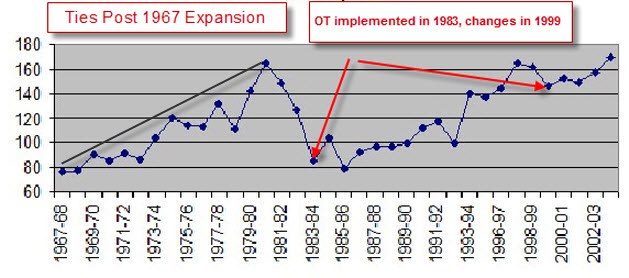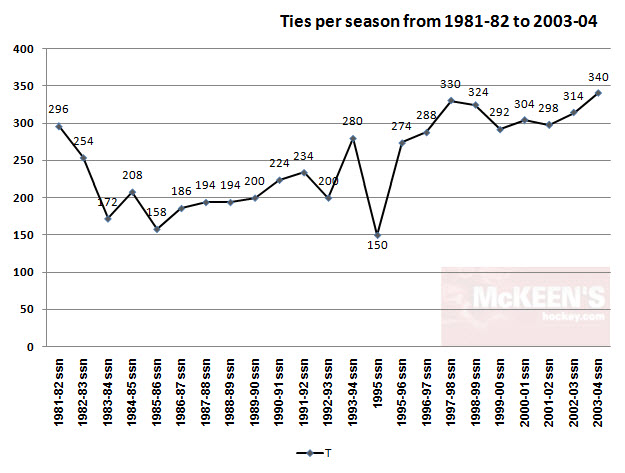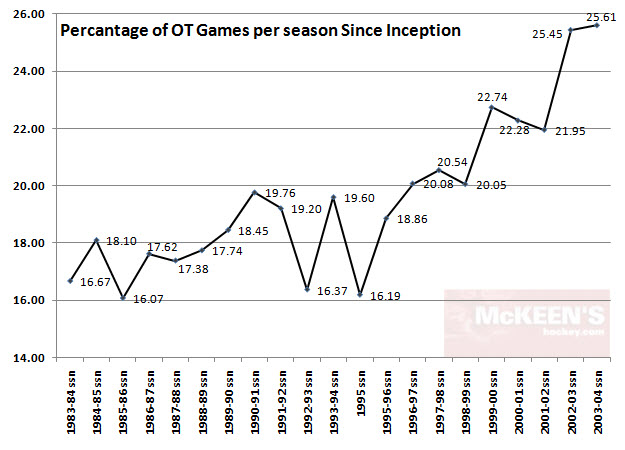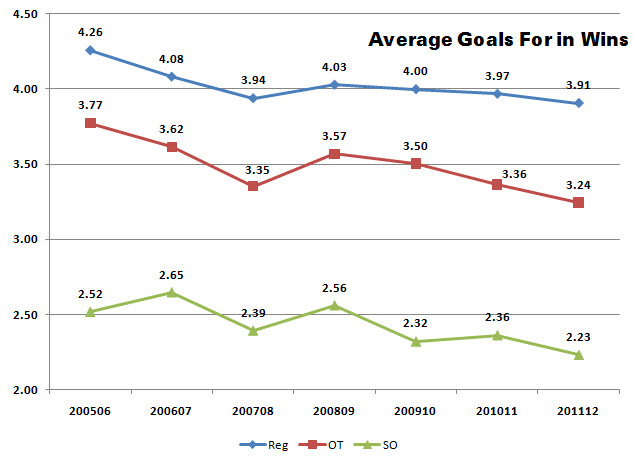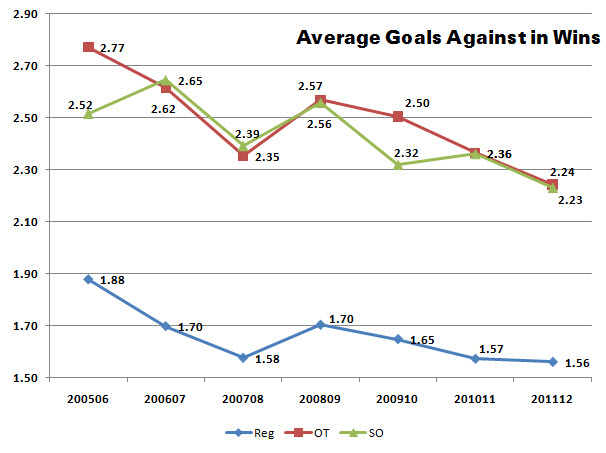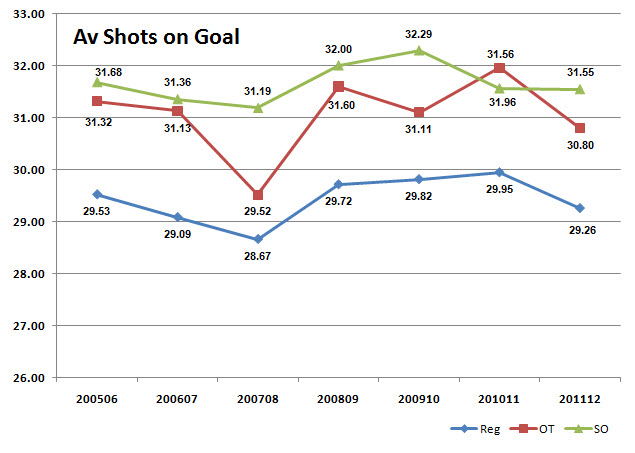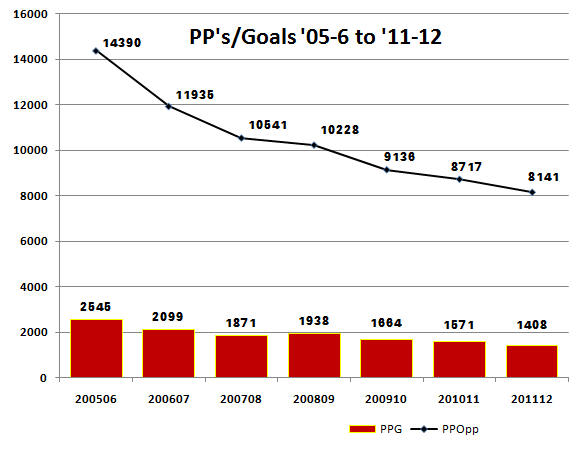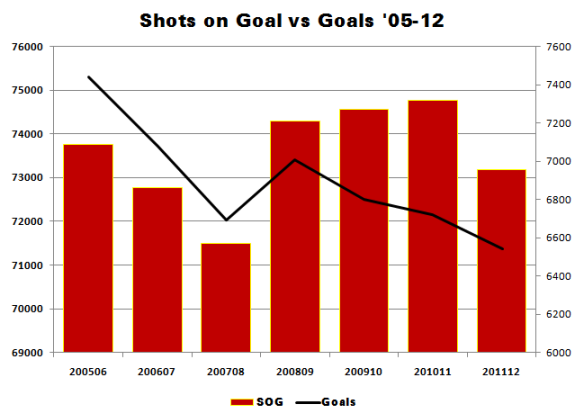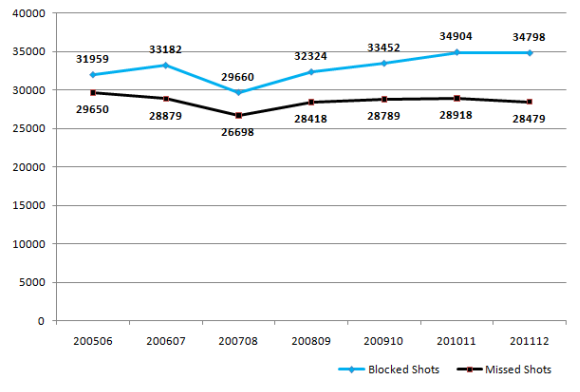As the season winds down and playoff hopes extinguish quick, the Bettman point and three-point games effects on the standings drive teams and fans nuts. All for the sake of parity. It’s an extra point created out of nothing.
Creation of the extra point without an underlying hard asset has a similar dilution to another concept.
G. Edward Griffin in the book The Creature from Jekyll Island points this out in what he describes as the Mandrake mechanism. Money is created without any hard asset to which its valued and as a result new currency dilutes the rest of the currency in circulation.
Mandrake was a comic strip character known to the author, so he chose to name this sleight of hand technique after him.
Gary Bettman is no magician, even if under his watch, a full season disappeared and two were shortened in front of his customer’s eyes.
The Bettman Point is similar to the Mandrake mechanism, only instead of Fiat money, it creates an extra point out of nothing. Fiat money devalues currency.
The ‘Bettman mechanism’ (as I shall refer to it going forward) devalues game winning goals according to Bruce McCurdy.
Meanwhile, in Gary Bettman's NHL a game winning goal has been effectively devalued
How did we get here?
TIES, OVERTIME AND EXTRA POINTS
In 2013 the trend to go into extra time has actually declined. It’s too early to interpret a small sample as a trend, especially with the variables attributed to a shortened season, like the logjam of points for teams trying to vie for a playoff spot.
This late in the season, it would be prudent to ensure getting to overtime to at least guarantee a standings point.
The table below breaks down the amount of extra time games versus total games played during the same time period late in each of the seasons.
In April the percentage of the schedule that required extra time game dipped below 20%, an NHL low since the shootout was born. Games going into overtime up to March 31, 2013: 126 games out of 520 total games - 24.23% of the schedule. A total of 126 extra points were created magically by the Bettman mechanism.
| Season | Extra Time | Games Played | % of Sched |
| 200506 | 64 | 257 | 24.90 |
| 200607 | 41 | 179 | 22.91 |
| 200708 | 38 | 155 | 24.52 |
| 200809 | 44 | 200 | 22.00 |
| 200910 | 61 | 206 | 29.61 |
| 201011 | 47 | 190 | 24.74 |
| 201112 | 53 | 182 | 29.12 |
| 201213 | 30 | 157 | 19.11 |
Dubbed the loser point was ironic considering the underlying reason the NHL employed it was actually as an incentive to win, and not a contentious point in an unfair scoring system.
The NHL made two fundamental changes in the league’s history. The first change was the implementation of overtime in 1983-84. Motivation was the incentive for teams to make an all-out push to win the game – but meant losing the point if they were scored against.
Overtime was a result of a rather steep incline in the occurrences of ties after post-1967 expansion through to the end of the 1970’s. By decade’s end, as the NHL was annexing the WHA to bloat to 21 teams, tie games were about to peak. In 1983-84 overtime became reality. Teams now had an extra five minutes to all out win. Or, they could bank the point and avoid the risk of losing the game.
The image below shows the steep incline from post-expansion to the end of the decade and points out the increase in ties up until the 1999 introduction of the Bettman mechanism
TIES POST EXPANSION
Overtime may have reduced the rate and amount of real tie games, but the steady creep to higher levels is fairly evident (the dip represents the lockout shortened 1995 season),
The NHL changed during the 1990’s too, with expansion adding new teams at regular intervals. This growth emerged amid adoption of the neutral zone trap. ‘The trap’ effectively reduced the ability to score goals and pulled scoring down.
Tie games crested at just fewer than 300 per season before spiking and crossing.
The view via percentage shows the steep incline in the mid-1990s from 16% to over 22% at its peak that necessitated league intervention. The trap was becoming more common place and as scoring declined, holding a lead increased the occurrence of clutching and grabbing prompting Mario Lemieux to utter the infamous quote ascribing the NHL to a "garage league".
Teams entering overtime had little incentive to go all for the win, especially with a point on the line. One mistake in overtime cost your team a point rather than gaining a full two, it wasn’t wise to take risks.
The Bettman mechanism was supposed to address this as an attempt to encourage teams to go for the extra point in overtime instead of playing to bank a single point.
The Bettman mechanism had an adverse and undesirable effect.
Stimulating teams to go for the win with one point banked didn’t have a positive effect. Teams were taking advantage of the free point and overtime games were still on the rise.
Research into this topic was conducted in depth by Phil Birnbaum in his Overtime Incentive Study. The study’s focus was to determine if teams were incentivized to play for overtime, causing the numbers to increase as in the graph above. Birnbaum had this to say about overtime games.
“With the new system, it would be in every team's interest to play a lot of overtime games. Currently, a team which loses as many OT games as it wins would capture 1.5 points for each such game. To match that in non-overtime games, the team would have to win 75% of its non-overtime games – and hardly any teams are that good. Even back when OT games were worth only 2.5 points, a non-OT team would have to have a .625 winning percentage to match the points of an average OT team.
The data supported the theory. The implementation of the guaranteed point inflated the occurrence of overtime games.
A different approach was required. Ties were still too frequent and the proliferation of overtime games needed tinkering.
Not before the 2004-05 lockout where the earth opened up, swallowed the NHL brain trust and from that emerged from the void with the idea to implement a shootout. Games would no longer end with a tie; there would be a definitive winner, every game
SHOOTOUTS
The introduction of the extra point in 1999 raised the proportion of overtime games from about 18% to about 21%. Then, the introduction of the shootout bumped it up even further, to about 26%.
Via Phil Birnbaum Overtime study
A similar conclusion was determined by Behind The Net founder Gabriel Desjardins after the implementation of the shootout.
Teams seem to have figured out that dragging 10 games to the shootout is as good as winning five more games in regulation and can vault a team into the playoffs.
Gabe’s research showed a dip in the scoring rate late in games, pushing further the notion that teams are playing for a regulation tie, banking at least a point.
Bruce McCurdy explained the value thrust upon the game-tying goal, an in relation to a game-winner.
Bruce concludes that a game-tying goal is actually worth 1.5 standings points, effectively devaluing the game-winning goal to a value of 1 point in the standings. A similar conclusion emerged from Birnbaum’s research, effectively labeling an overtime game as worth 1.5 points.
There’s the explanation in there about the “3-point must system”, awarding three points for a regulation win, two for an overtime/shootout win with a guaranteed point going to the losing team in extra time
@katshockey By getting to OT,team guarantees itself 1 pt with a chance at "the" 2nd. Under 3-point must, OT also guarantees sacrificing 1 pt
— Bruce McCurdy (@BruceMcCurdy) April 16, 2013
Bruce names this the ‘three point must’ system. Every game ends in three points and it balances the universe, thus genuinely restoring .500 as a true indication of a mediocre team. The Bettman mechanism artificially inflates win percentage.
@katshockey "3-point must" system would instantly restore .500 (a.k.a. .50000000000) to its meaningful position at centre of reference frame
— Bruce McCurdy (@BruceMcCurdy) April 16, 2013
That seems to be the obvious step to make the changes mathematically compatible. Most feel the 3-point system is the answer, but I feel there’s deeper motivation than strictly math that incorporates current trends in scoring. Mathematical motivation aside, in one game, with one set of circumstances, the mathematical equilibrium isn't what players and coaches are pondering. They are trying to maximize points.
@katshockey You make a shootout win worth less than a regulation win,& teams are less likely to be happy to wait for SO & take their chances
— Bruce McCurdy (@BruceMcCurdy) April 16, 2013
While merited, is there a clear motivational factor to win games in overtime if they are worth the same amount of points as a shootout win? There isn’t any incentive in that regard. I also think that teams that intentionally play for the shootout are relatively low.
Give a team three points in a regulation win and the enticement is to end the game in regulation. At all costs. I feel this is an enticement to go back to modified forms of the trap earlier in games, instead of looking for ways to score and create offense.
Scoring trends are clear; and they’re all in decline.
There’s a corresponding dip in goals against in wins as well.
A decline in scoring is the first step in the downward spiral into another dead puck era. Instead of clutching and grabbing, it will just be something else, blocked shots for example. Power plays are already declining and there’s more obstruction creep than when the league first clamped down. These aren’t exactly signs that the NHL is adapting to open up offense, but the opposite.
Between lockouts, teams fired less than 30 shots on average in regulation games. (note the image has flipped the values for 2010-11 where 31.96 and 31.56 are displayed for the incorrect data point. They should be reversed).
Power plays are also on the downtrend. Unless any new rule changes are introduced that offers a paradigm shift on the calling of penalties, this trend is likely to even out at this point, never to return to the lofty heights of the first season after the '04-5 lockout.
And there’s been a corresponding drop in shots on goal and overall scoring.
If RTSS reports can be trusted, the trend for blocked shots was rising, but evening out by the end of the first lockout period. The pace for this lockout shortened season over an 82 game season has about 33673 blocked shots, somewhere a little closer to the top of the rankings rather than at the bottom.
The Bettman Mechanism wasn't the ideal solution as it was first meant to be once implemented. I feel with the introduction of guaranteed win/loss component when the shootout came to be, the Bettman point has lost it's original intention and is now a deterrent rather than an aid.
Perhaps the 3-point system is finally due.
But where's the motivation?
Follow the McKeen's team on Twitter:
@KatsHockey
@mckeenshockey
































